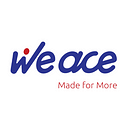#ThePowerOfWords: Negating the stereotypes of a woman in a leadership position and rising above them.
By Akhtar Ali, Vice President, Technical Computing Development, Systems & Technology Group, IBM
“I am no longer accepting the things I cannot change. I am changing the things I cannot accept.”
— Angela Davies.
Prominent author and chairperson of Infosys Foundation, Sudha Murthy recounts an incident from her early career days when she wrote a postcard to JRD Tata [then the head of the Tata Group] asking him to do something about the gender bias TELCO [now Tata Motors] was promoting in the recruitment procedure in the plant. Her brave letter broke a glass ceiling. She became the first woman engineer to be hired by TELCO, paving the way for many others to follow suit. The story is an important reminder that great changes happen when we challenge the status quo. And the willingness of organizations to usher in the change.
In the recent years, women have made important gains towards representation in senior leadership positions. Organizations are making gender diversity a priority through focused efforts on equitable gender representation in candidates for senior positions, mentoring initiatives, leadership education programs and networking opportunities.
While notable strides have been made in promoting gender equality in organizations, there is a long way to go to bridge the deficit of women in C-suite roles. In my view it is important for organizations to examine unconscious biases, cultural beliefs and established stereotypes — the “invisible barriers” that often prevent many women from reaching top positions in their organizations.
Mending the “Broken Rung”
McKinsey & Co. and Leanin.Org in their Women in the Workplace report coined the term “Broken Rung,” a phenomenon in which the biggest obstacle women face on the path to senior leadership is at the first step up to a manager. Women are promoted to manager positions at far lower rates than men, which means fewer women who can be promoted to next level — a cascading effect of the broken rung.
Organizations must focus on providing women critical support early in their careers (leadership training, challenging assignments, sponsorship), equitable succession planning and building a strong support network of women in the organization.
Internalising a leadership identity
A Harvard Business Review article on unseen barriers to women rising authored by Herminia, Robin and Deborah emphasizes the fact that people become leaders by internalizing a leadership identity and developing a sense of purpose.
This is particularly challenging for women owing to gender stereotyping and unconscious biases in organizations. Empathy, open communication, mindfulness, crisis management, negotiating high stake situations are some of the innate leadership qualities that women bring to the table. Women should be encouraged to embrace their natural leadership styles and step out of their comfort zones to throw their “hat in the ring” for opportunities that resonate with them.
Addressing unconscious bias
Unconscious gender bias is a significant barrier to career advancement of women. And it is key for organizations to explore unconscious bias in perceptions about potential for leadership. The mitigation of the impact of unconscious biases is a three step process: Awareness, Acknowledgement and Addressing. Understanding the triggers that impact our judgement and behaviors and make conscious efforts to eliminate them through training, modernizing processes, leveraging technology and making leadership accountable is key.
Margaret Mead famously said “Never underestimate the power of a group of committed people to change the world. In fact, it is the only thing that ever has”.
We all have the opportunity and the responsibility to build a more equitable workplace for women leaders to grow and succeed.
When women lead, we all win.
About the Author: Akhtar has a portfolio that spans areas of high-performance computing, high performance file systems and workload orchestration software targeted at mission critical enterprise workloads. He started his IBM career more than 32 years ago in Mid Hudson Valley working on Logic Synthesis and Design Automation for the S390 platform. He subsequently joined Software group and has been active in the solutions area, especially for Finance sector, before moving to IBM Systems.
Stay tuned for more such enlightening ideas and views…
